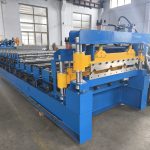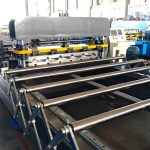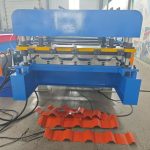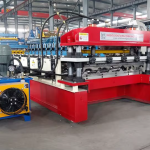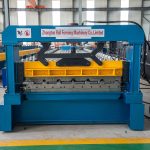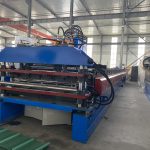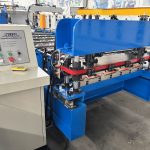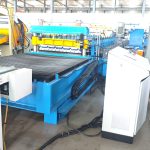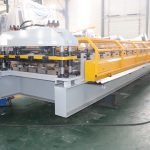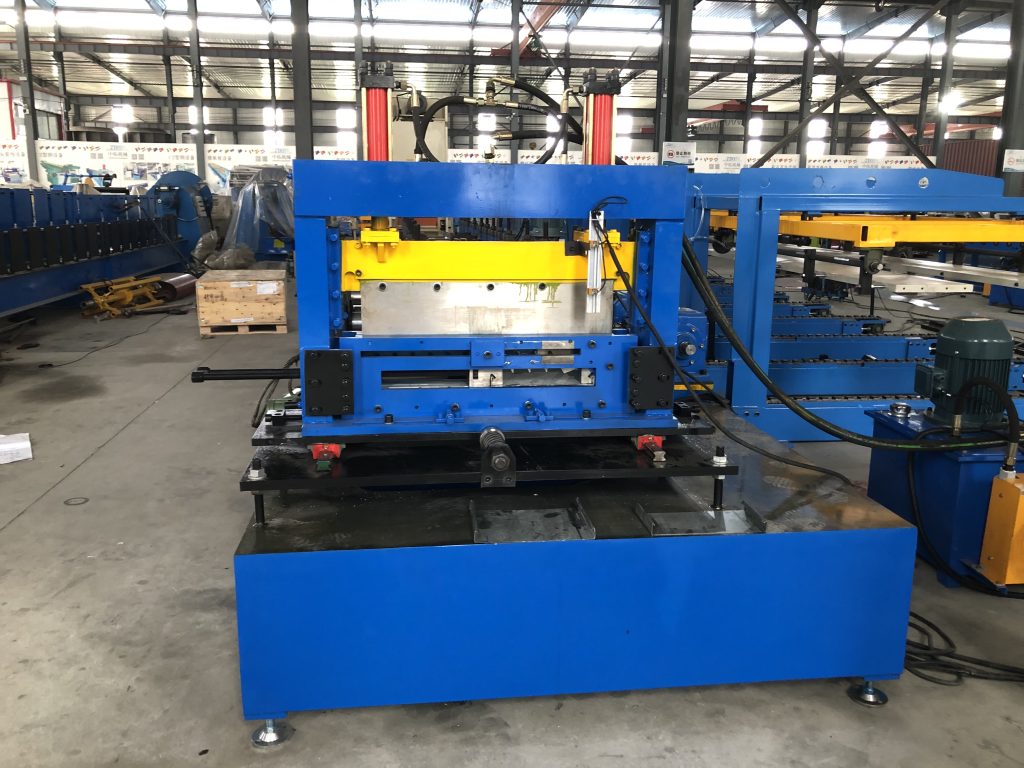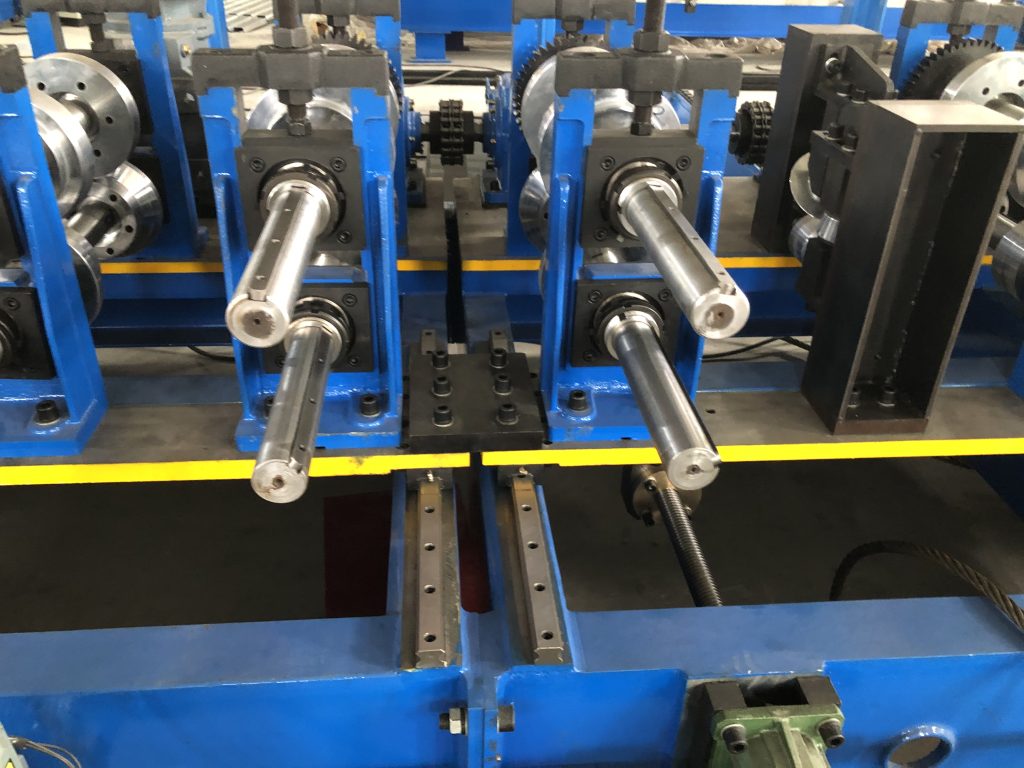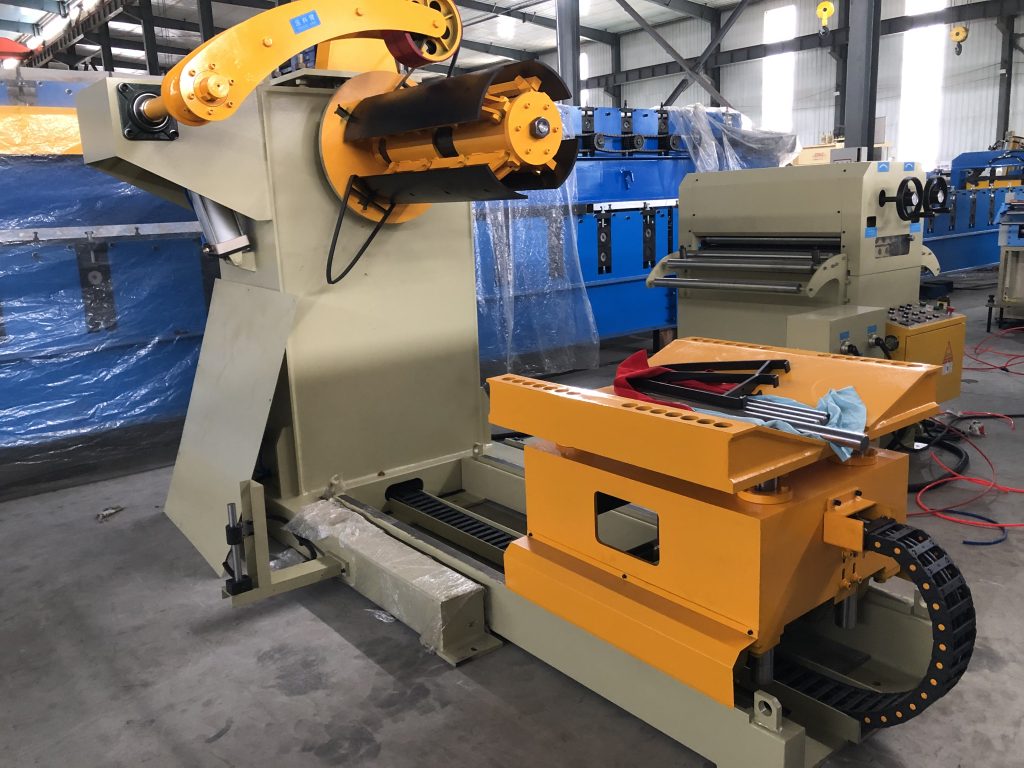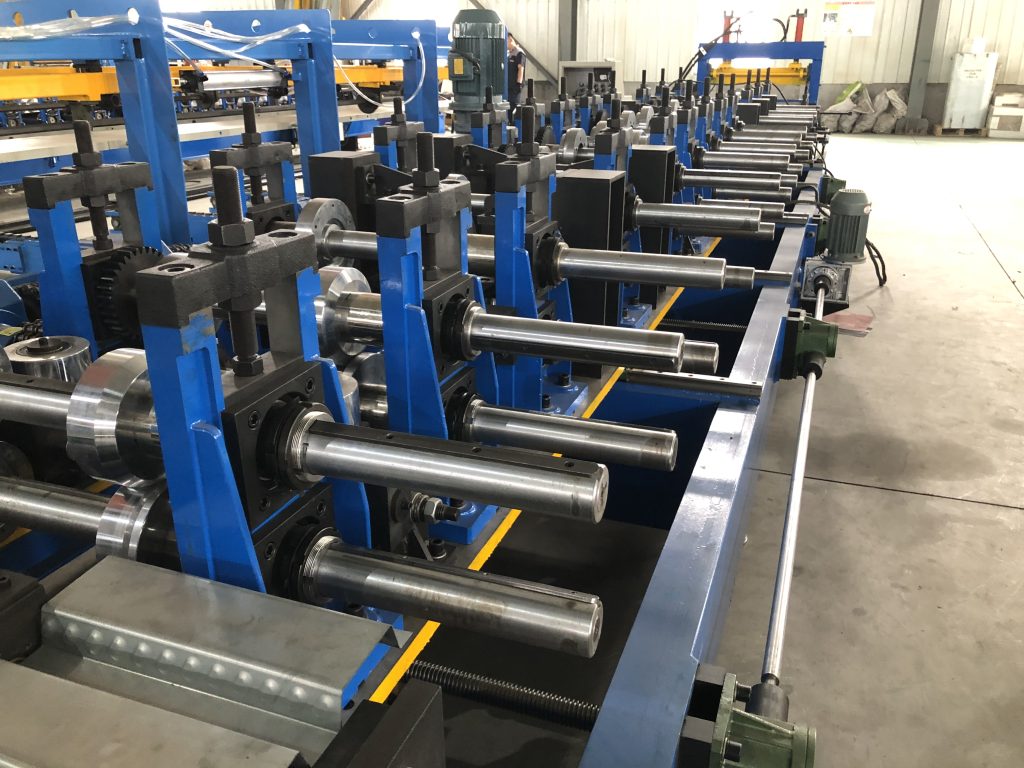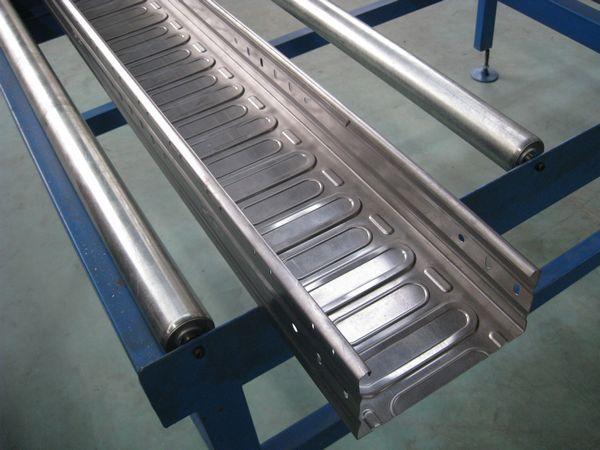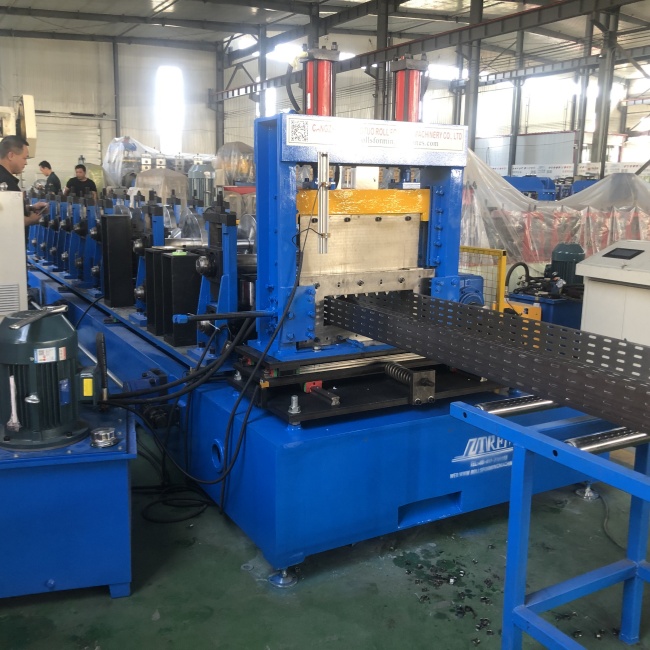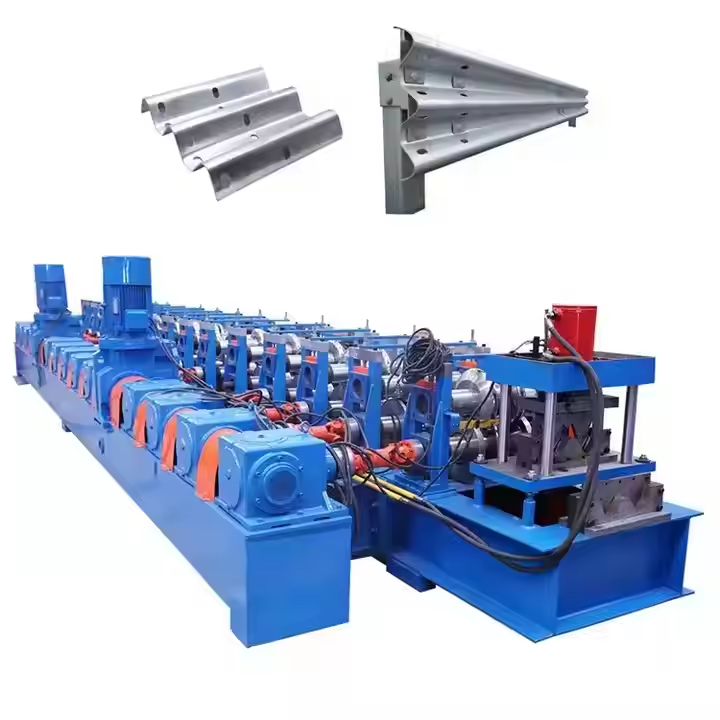Work flow of cable tray roll forming mahchine
https://www.youtube.com/watch?v=sdtig-UrMDE&pp=0gcJCa0JAYcqIYzv
ZTRFM Full Automatic Full Automatic Cable Tray Roll Forming Making Machine
A cable tray forming machine is a specialized automated forming equipment designed for mass production of cable trays. It is widely used in industries such as electric power, construction, chemical engineering, and rail transportation, serving as a core production equipment for bridge components in cable laying systems. Through continuous processing of metal raw materials, it efficiently produces bridge products that meet engineering standards, playing an important role in modern industrial construction.
1. Working Principle and Core Processes of cable tray roll forming machine
Based on “continuous roll forming” technology, the cable tray forming machine takes metal coils (such as cold-rolled steel plates, galvanized steel plates, stainless steel plates, etc.) or cut-to-length plates as raw materials. Through the synergistic effect of multiple sets of roll combinations, it gradually processes flat plates into bridge profiles with specific cross-sectional shapes. The specific processes include:
1. Uncoiling stage: The coil is smoothly released through an uncoiling stand, and a tension control system is used to ensure uniform material conveying, avoiding wrinkling or deviation of the plates.
2. Leveling stage: The leveling roll group is used to flatten and correct the plates, eliminating bending and warping caused by storage or transportation, and providing a flat foundation for subsequent forming.
3. Roll forming stage: As the core process, the plate is subjected to progressive rolling through multiple sets of rolls (usually 10-20 sets) with different shapes. Each set of rolls is responsible for local deformation, gradually pressing the flat plate into structures such as the groove body, side edges, and flanges of the bridge (e.g., the closed groove shape of channel cable trays, the grid skeleton of ladder cable trays, etc.), and finally forming a cross-sectional shape that meets the design requirements.
4. Cutting stage: According to the preset length, the continuously formed bridge is accurately cut by a flying saw or a hydraulic cutting device, ensuring that the length error of the finished product is controlled within the millimeter level.
5. Subsequent treatment (optional): Some equipment integrates functions such as punching and marking, which can directly process mounting holes and identification information after forming, reducing subsequent processes.
2. Equipment Composition and Technical Features of roll forming machine
1. Core components:
– Uncoiling system: Including an uncoiling stand and a tension controller, adapted to coils of different weights (usually 1-5 tons).
– Forming main machine: Composed of multiple sets of rolls, gearboxes, and transmission shafts. The roll material is mostly high-strength alloy steel (after quenching treatment) to ensure wear resistance and forming accuracy.
– Control system: Adopting PLC (Programmable Logic Controller) + touch screen operation, which can preset bridge specification parameters (width, height, thickness, etc.) to realize automated production. Some high-end models support remote monitoring and parameter calling.
– Cutting system: Equipped with mechanical cutting or hydraulic cutting devices according to production capacity requirements. The cutting response time of high-speed models can be controlled within 0.5 seconds.
Main roll forming machine
| Item | Name | Specifications |
| 1 | Raw material | GI&PPGI |
| 2 | Raw material thickness | 0.5-1.5mm |
| 3 | Decoiler | 3T |
| 4 | Felt device | Available |
| 5 | Roller station | 12stations |
| 6 | Roller material | 45# steel |
| 7 | Shaft diameter | 60mm |
| 8 | Shaft material | 45# steel |
| 9 | Transmission | By chains |
| 10 | Motor power | 7.5kw |
| 11 | Machine frame | steel plate welded with grinding |
| 12 | Cutting type | Hydraulic cutting |
| 13 | Hydraulic power | 5.5kw |
| 14 | Cutting blade material | Cr12 quenched |
| 15 | Cutting tolerance | +/1mm |
| 16 | Control system | Delta/ Siemens PLC |
2. Distinctive features:
– Efficient continuous production: It can produce 10-30 meters of bridges per minute (depending on specifications), with a daily output of up to several thousand meters, far exceeding traditional manual or segmented processing methods.
– Flexible specification adjustment: By adjusting the roll spacing, replacing some roll sets, and modifying control system parameters, it can produce channel, pallet, ladder, and other types of bridges with different specifications (width 50-800mm, height 50-300mm) to meet the needs of different engineering scenarios.
– High forming accuracy: The roll processing accuracy reaches 0.01mm, and with the drive of servo motors, the cross-sectional dimension tolerance of the bridge is ensured to be ≤±0.5mm, and the straightness error is ≤1mm/m, ensuring the splicing adaptability during installation.
– Strong material adaptability: It can process various metal plates with a thickness of 0.3-3mm, including ordinary steel plates, galvanized plates, stainless steel plates, etc., to meet the anti-corrosion and load-bearing requirements in different environments.
3. Application Scenarios and Advantages
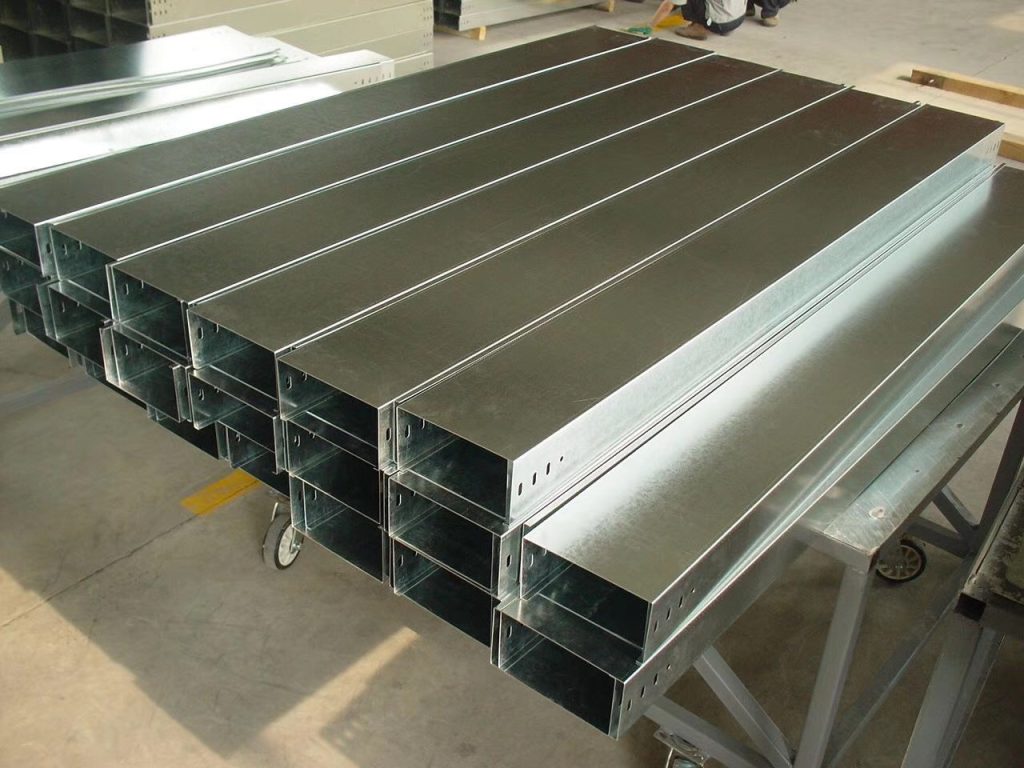
1. Main applications:
– Construction engineering: Production of cable laying bridges for strong and weak electricity in office buildings and commercial complexes.
– Industrial field: Explosion-proof and anti-corrosion cable trays in chemical and metallurgical workshops, which need to withstand high temperatures and corrosive environments.
– Infrastructure: Cable wiring systems in rail transportation (subways, high-speed railways) and airports, requiring bridges to have high strength and stability.
2. Advantages over traditional processing:
– Reducing labor costs: The whole process is automated, requiring only 1-2 people to monitor the equipment operation, reducing manual operations.
– Improving material utilization: Continuous rolling produces almost no waste, with a material utilization rate of over 95% (about 70-80% for traditional cutting methods).
– Ensuring product consistency: Avoiding individual differences in manual processing, ensuring that the size, strength, and other properties of each batch of bridges are uniform and meet engineering acceptance standards.
4. Selection and Maintenance
When purchasing, attention should be paid to the following parameters according to production needs: applicable plate thickness, maximum forming speed, range of supported bridge specifications, cutting accuracy, etc. Daily maintenance requires regular cleaning of rolls and checking the lubrication of transmission components to ensure long-term stable operation of the equipment.
In conclusion, the cable tray forming machine provides a reliable guarantee for the large-scale and standardized production of cable trays through automated and high-precision production methods, and is an indispensable key equipment in the construction of modern industrial cable systems.


